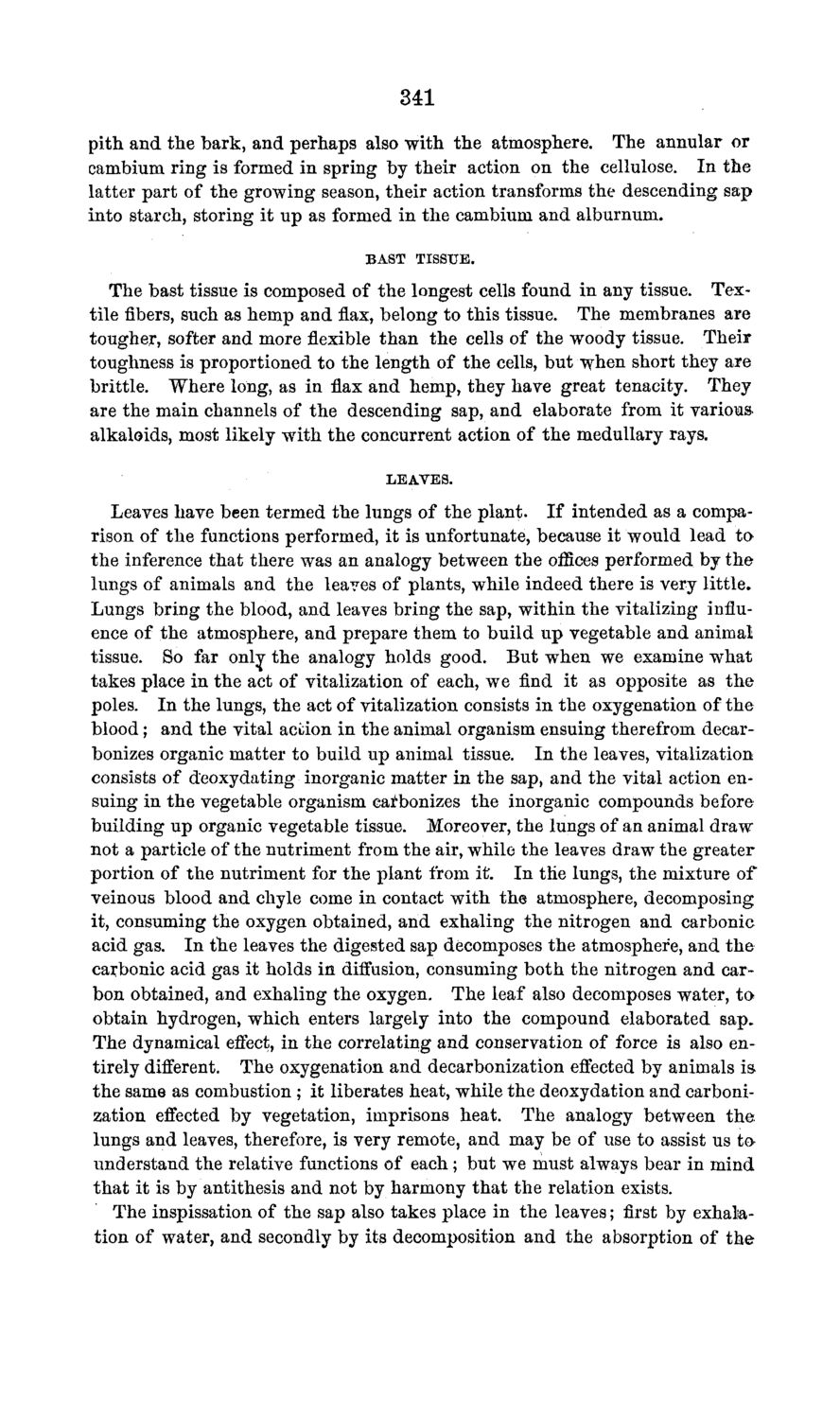| |
| |
Caption: Board of Trustees Minutes - 1869
This is a reduced-resolution page image for fast online browsing.

EXTRACTED TEXT FROM PAGE:
341 pith and the bark, and perhaps also with the atmosphere. The annular or cambium ring is formed in spring by their action on the cellulose. In the latter part of the growing season, their action transforms the descending sap into starch, storing it up as formed in the cambium and alburnum. BAST TISSUE. The bast tissue is composed of the longest cells found in any tissue. Textile fibers, such as hemp and flax, belong to this tissue. The membranes are tougher, softer and more flexible than the cells of the woody tissue. Their toughness is proportioned to the length of the cells, but when short they are brittle. Where long, as in flax and hemp, they have great tenacity. They are the main channels of the descending sap, and elaborate from it yarious. alkaloids, most likely with the concurrent action of the medullary rays. LEAVES. Leaves have been termed the lungs of the plant. If intended as a comparison of the functions performed, it is unfortunate, because it would lead to the inference that there was an analogy between the offices performed by the lungs of animals and the leaves of plants, while indeed there is very little. Lungs bring the blood, and leaves bring the sap, within the vitalizing influence of the atmosphere, and prepare them to build up vegetable and animal tissue. So far only the analogy holds good. But when we examine what takes place in the act of vitalization of each, we find it as opposite as the poles. In the lungs, the act of vitalization consists in the oxygenation of the blood; and the vital action in the animal organism ensuing therefrom decarbonizes organic matter to build up animal tissue. In the leaves, vitalization consists of deoxydating inorganic matter in the sap, and the vital action ensuing in the vegetable organism carbonizes the inorganic compounds before building up organic vegetable tissue. Moreover, the lungs of an animal draw not a particle of the nutriment from the air, while the leaves draw the greater portion of the nutriment for the plant from it. In the lungs, the mixture of veinous blood and chyle come in contact with the atmosphere, decomposing it, consuming the oxygen obtained, and exhaling the nitrogen and carbonic acid gas. In the leaves the digested sap decomposes the atmosphere, and the carbonic acid gas it holds in diffusion, consuming both the nitrogen and carbon obtained, and exhaling the oxygen. The leaf also decomposes water, to obtain hydrogen, which enters largely into the compound elaborated sap. The dynamical effect, in the correlating and conservation of force is also entirely different. The oxygenation and decarbonization effected by animals isthe same as combustion ; it liberates heat, while the deoxydation and carbonization effected by vegetation, imprisons heat. The analogy between the lungs and leaves, therefore, is very remote, and may be of use to assist us to* understand the relative functions of each; but we must always bear in mind that it is by antithesis and not by harmony that the relation exists. The inspissation of the sap also takes place in the leaves; first by exhalation of water, and secondly by its decomposition and the absorption of the
| |